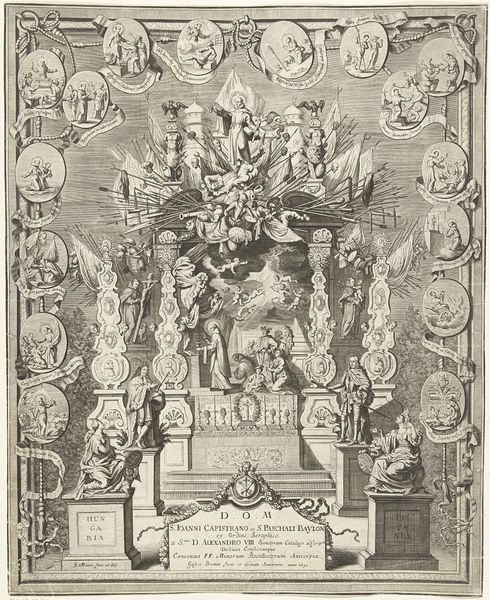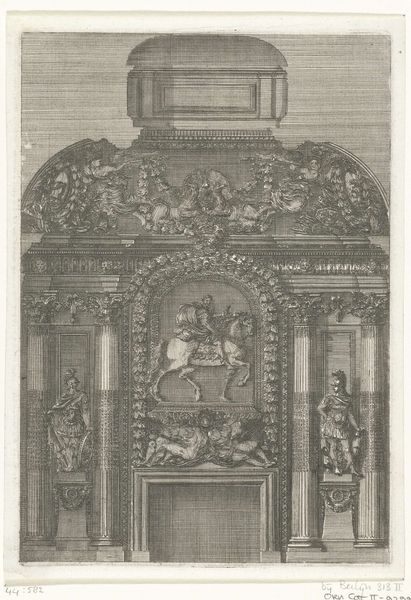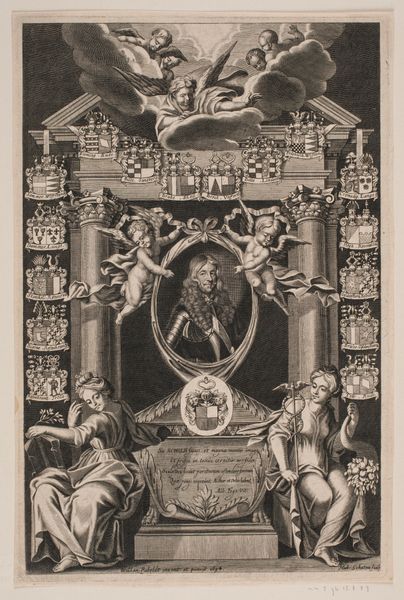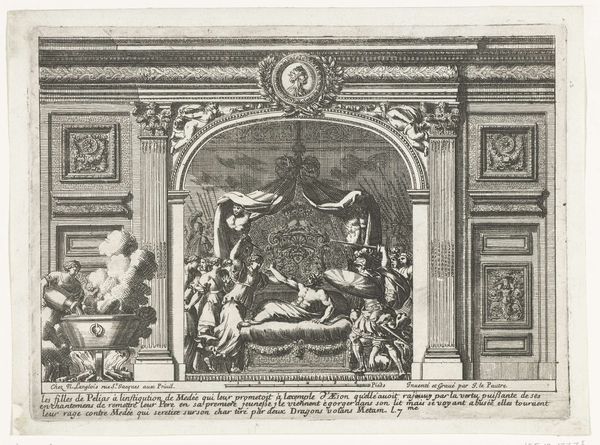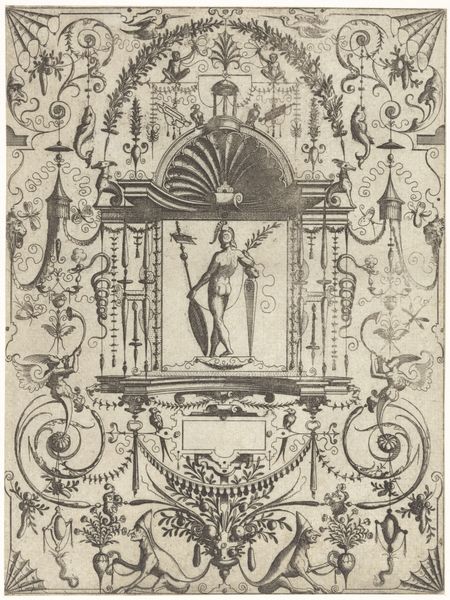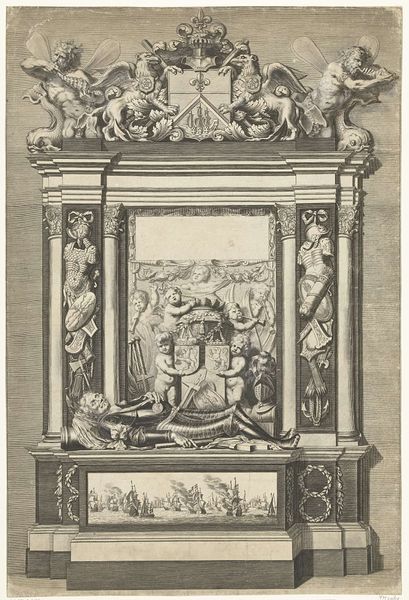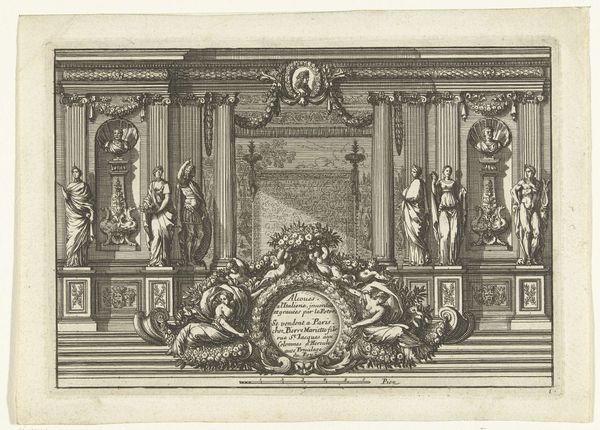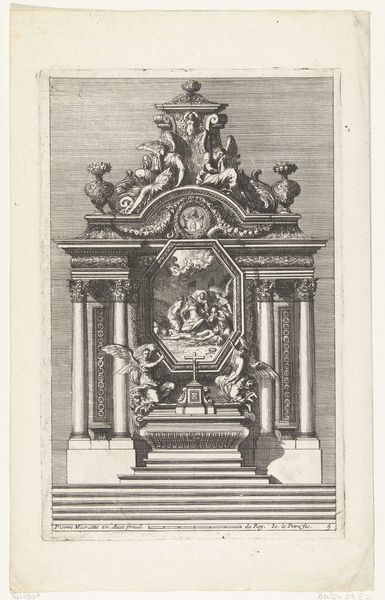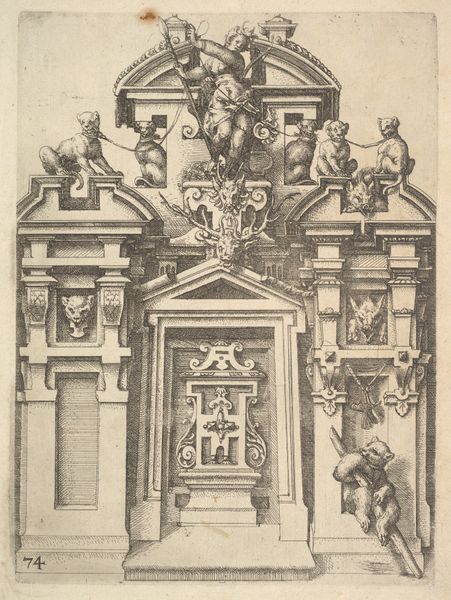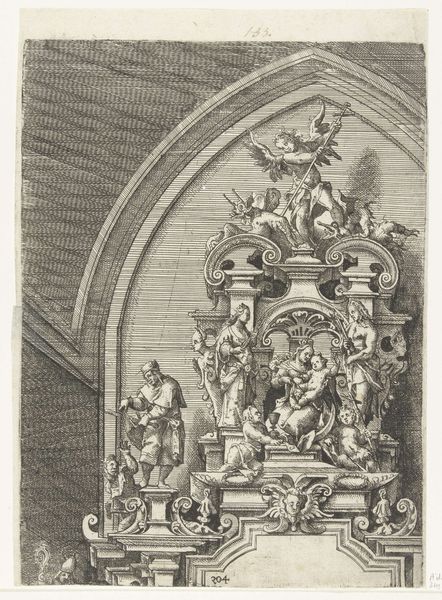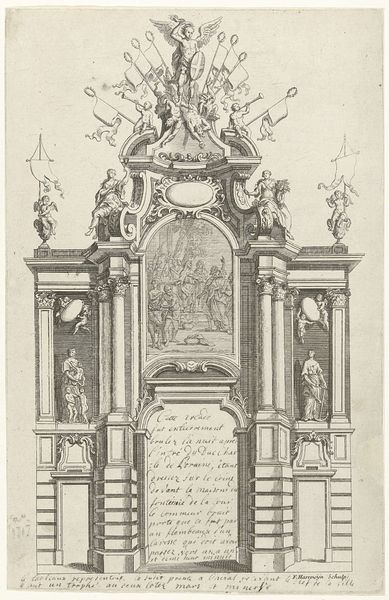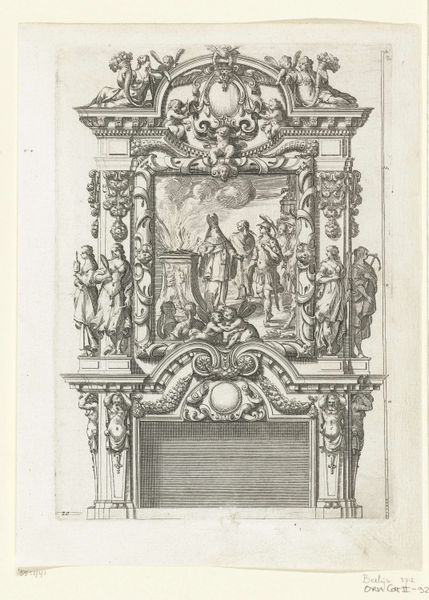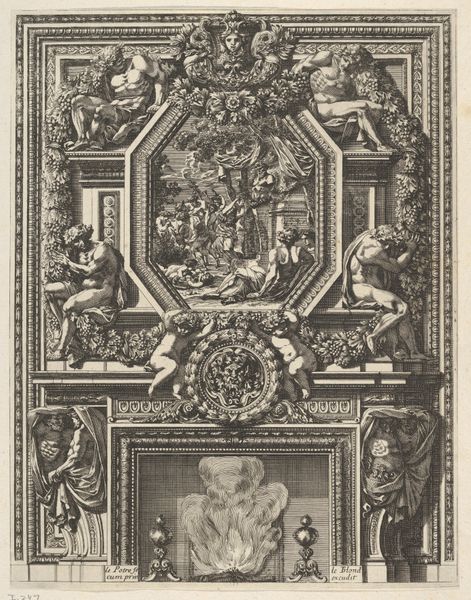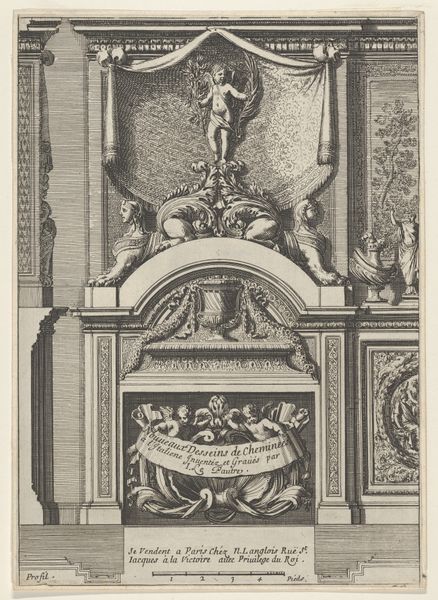
Schouw met een wildeman (links) en een wildevrouw (rechts) naast een lege ovale cartouche 1560 - 1598
0:00
0:00
Dimensions: height 247 mm, width 183 mm
Copyright: Rijks Museum: Open Domain
Editor: This is "Schouw met een wildeman (links) en een wildevrouw (rechts) naast een lege ovale cartouche," an engraving by Wendel Dietterlin from the late 16th century. I’m struck by its elaborate, almost theatrical quality and its somewhat grotesque figures. What should we be looking at in this print? Curator: This print offers a fascinating glimpse into Renaissance anxieties surrounding civilization and the "other." Notice how the "wild man" and "wild woman"—common figures in European art and pageantry—flank a central, empty cartouche. What do you make of that emptiness, situated as it is between these figures representing the untamed wilderness? Editor: It feels like a void, almost like something is missing or yet to be defined. Curator: Precisely. Dietterlin, working within a Mannerist aesthetic, exaggerates and distorts classical forms. Consider how this relates to the historical context. The era of exploration and colonization heavily shaped European perceptions of self and other. These "wild" figures, often associated with sexuality and untamed nature, became a foil against which European identity, reason, and order were defined. Does this suggest something about power dynamics in the formation of cultural identity? Editor: I think so. The blank cartouche between them could be understood as an empty stage awaiting the inscription of European authority and narrative, contrasting the perceived chaos of the "wild" with the promise of civilization. It seems a statement about dominance and control through representation. Curator: Indeed. Moreover, consider the gendered dimension – the "wild woman" alongside the "wild man," echoing early modern concerns about the control of female bodies and their association with nature. How does acknowledging these contexts shift your understanding of what initially appeared as merely a "theatrical" design? Editor: It becomes much more charged. The print acts as a historical mirror, reflecting anxieties about identity and control that are still very much present today. Thank you for making visible the cultural codes and power relationships in the work. Curator: It’s crucial to look beyond the surface and consider these images as products and active agents of their time. Hopefully, this engraving serves as a potent reminder to interrogate the narratives we encounter.
Comments
No comments
Be the first to comment and join the conversation on the ultimate creative platform.
